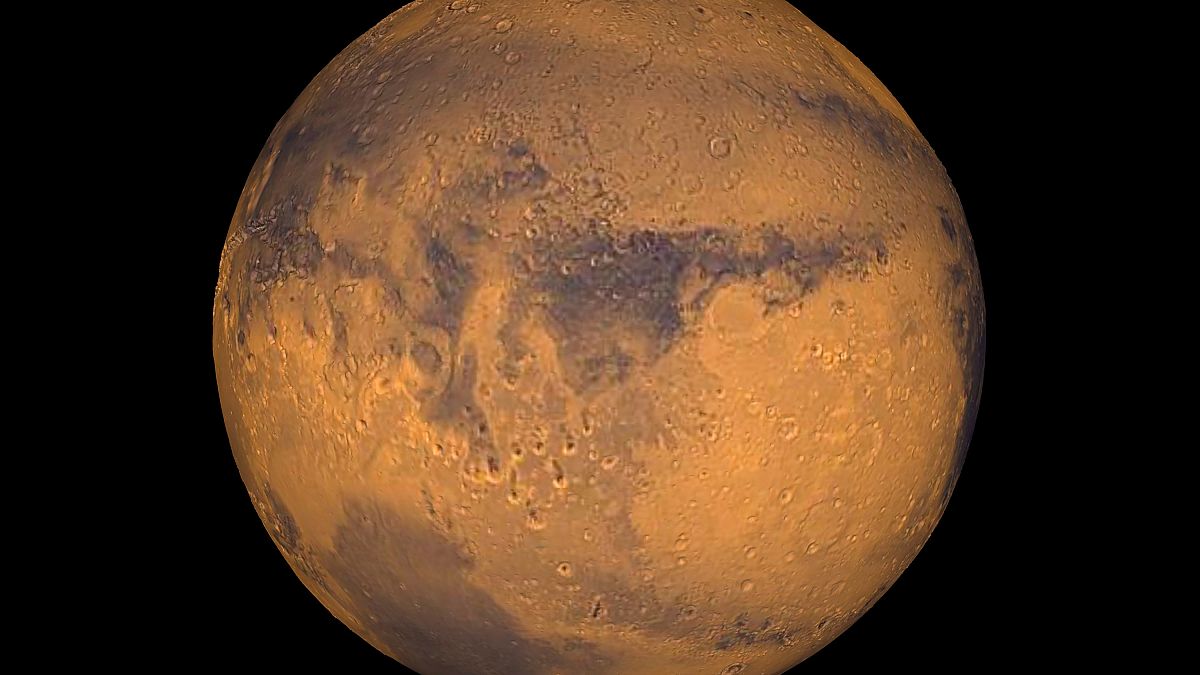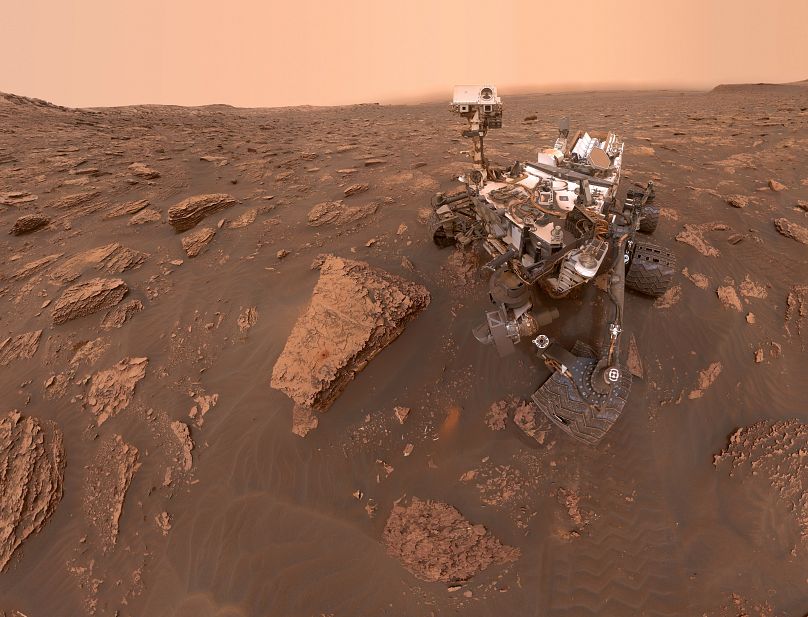Most of Mars is engulfed in a dust storm the likes of which has not been seen for over a decade.
Most of Mars is engulfed in a dust storm the likes of which has not been seen for over a decade. Photos from NASA's Curiosity rover show a gloomy red sky, while the usual sharp shadow that the car-sized explorer casts has disappeared as the sun is blotted from the sky.
The storm is bigger than the territory of the US and Russia combined, and sees talcum-powder sized particles being blown around by winds fuelled by temperature differences in the atmosphere of the southern hemisphere.
It's not a case of battening down the hatches, however — this isn't the Outer Hebrides. The atmospheric pressure on Mars is about 100 times lower than on Earth, so the storm won't be wreaking havoc in the way Hollywood film The Martian would have you imagine. Nevertheless, it's a big challenge for the man-made devices currently working on the planet's surface.
In particular, NASA's faithful old Opportunity rover, which is solar powered, could struggle, depending on how much fine dirt ends up on its panels. The last time Earth heard from the rover was on June 10th, when it went into low-power silent mode, as the sky overhead reached a record level of opacity. The rover will occasionally attempt to re-start itself, and mission managers are sitting on their hands, hoping it will come back to life when the storm subsides.
The good news is that Opportunity has been covered in dust before and survived. Small gusts and dust devils will come along after the storm has subsided, and likely offer what NASA calls a "cleaning event". Basically, the wind blows the accumulated particles off the solar panels, giving a much-needed boost in energy.
On the other side of the planet sits Curiosity, which has no energy issues, as it runs on nuclear power. The sunlight-blocking haze of dust, known as "tau", is now at its highest level ever recorded by the rover at Gale Crater. The team behind this machine is actually relishing the chance to witness a proper planet-wide dust storm, as the last time there was this kind of event on Mars was way back in 2007, five years before Curiosity arrived.
One of the big questions they want to answer is why do some Martian dust storms last for months and grow massive, while others stay small and last only a week?
"We don't have any good idea," says Scott D. Guzewich, an atmospheric scientist at NASA Goddard Space Flight Center in Greenbelt, Maryland, leading Curiosity's dust storm investigation. They'll be taking data from the rover and from the fleet of spacecraft — including two from Europe - currently circling the red planet to analyse the how, what, why and where of Martian dust storms.
In general, Mars is a dusty place, even on a fine day, so Curiosity is built to withstand the fine particles. The only real issue could be with its cameras, although they are normally pointed down when not in operation in order to avoid dust accumulation.

